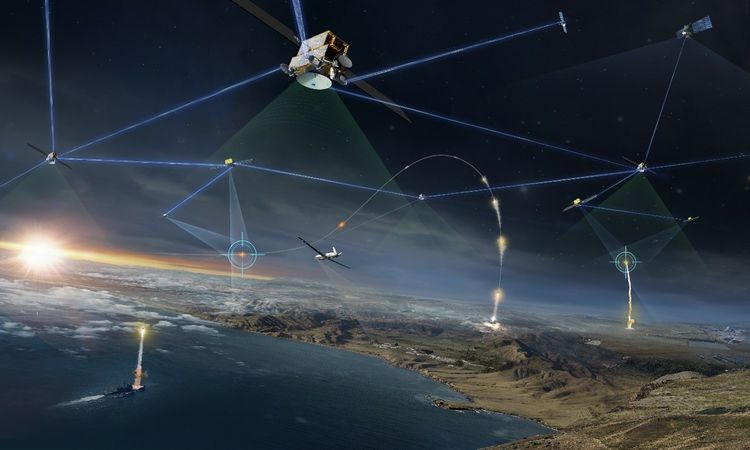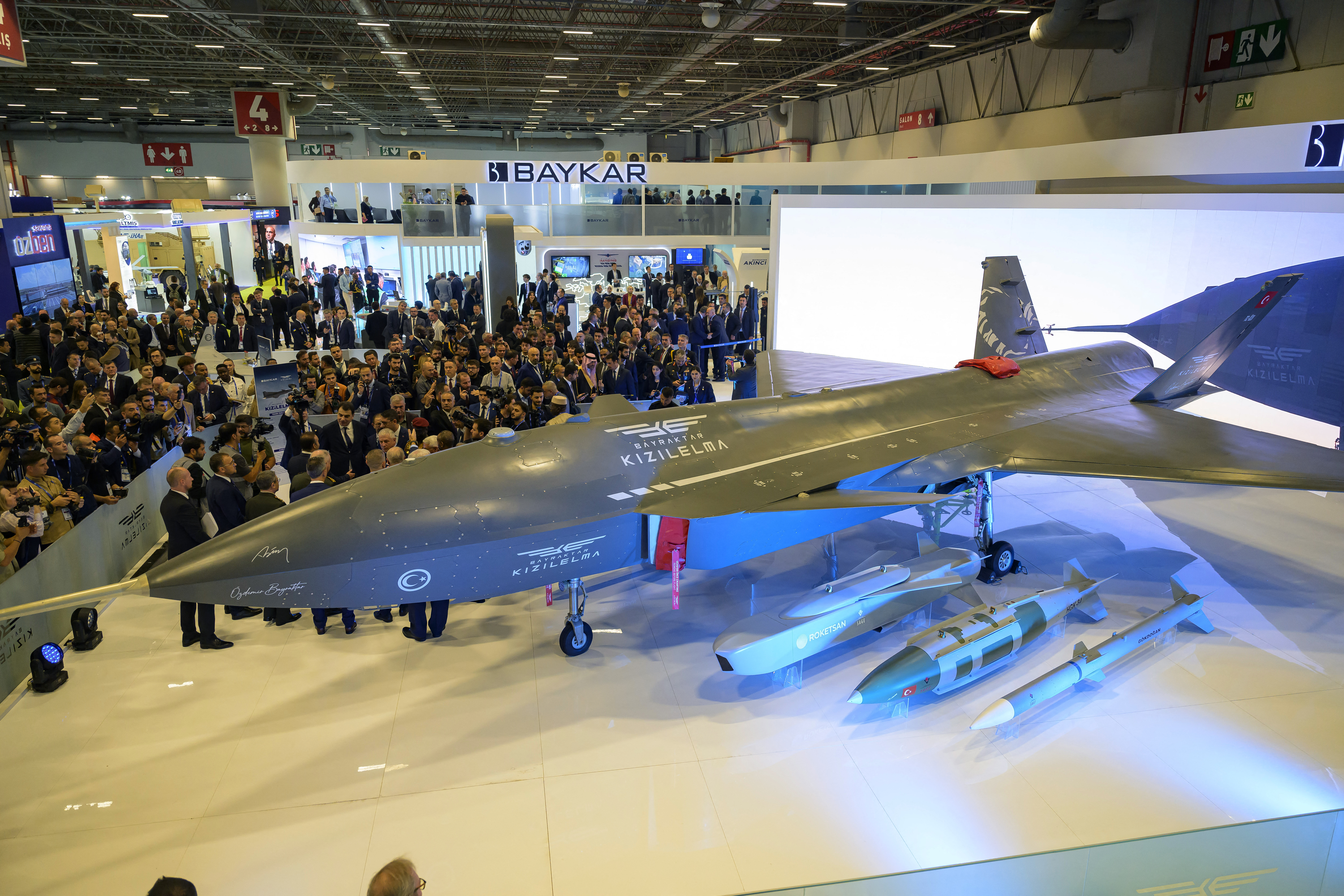
While the U.S. and its allies up their efforts to build out multi-orbit, multi-constellation satellite communications that are harder for an enemy to disrupt, officials noted technical and cost challenges, particularly for the user in the field.
Representatives from the Space Development Agency, the Army’s Combat Capabilities Development Command (DEVCOM), and the U.K. Ministry of Defense discussed multi-orbit SATCOM at Via Satellite Magazine’s GovMilSpace Digital event July 28.
“I’ve got to tell you, I think cost is one of the risks,” said Tom Sepka, satellite communications chief at the Army’s C5ISR Center in DEVCOM.
More orbits meant more resiliency, but cost had to be part of the risk calculation for the end user, he argued.
For decades, the U.S. military has relied on one or two SATCOM constellations in geostationary orbit. That left the end user on the ground with just one bill to pay, Sepka noted. More constellations means more options for the warfighter, and thus more resiliency—but also more cost.
“How do the end users afford the service contracts for multiple constellations? … The question becomes, how much resiliency can I afford?” he asked.
Paul Wells, the chief SATCOM engineer for the United Kingdom’s Ministry of Defense, also cited cost as a “massive risk.”
“If you look across all the nations currently, not just the U.K., things are very, very tight,” Wells said. “ … Massive investments are not always there as they have been historically.” Spending will have to be focused, he said: “The danger is you try and invest in absolutely everything. And that’s just not going to be possible.”
Sepka and Wells also agreed that the U.S., U.K., and its allies need to ensure all these new capabilities in different orbits and constellations can work well together—or risk leaving the user in the battlefield overwhelmed or uncertain about tapping into the full system.
“How does the end user manage its access to those multiple resources and coordinate that?” asked Sepka, noting that an additional channel of communication is only useful if the other party knows to use it, too.
Wells said trials run by the British military revealed problems with moving communications between military and civilian satellite networks when boots are on the ground and lives might be at stake. “Technically, it’s very easy to do, but actually procedurally it’s really a long process to do it, because of the time we take to set links, and obviously we’re getting better and faster at doing that, but that is another risk that comes with it. How do you orchestrate this? How do you make it run in real time?”
A proposed solution to both the cost and coordination problems is a single user terminal that can connect to multiple constellations across orbits—”one of the panaceas,” Wells called it. The Space Force, Navy, and Army have all started efforts to develop such a terminal, and USSF in particular is requesting $218 million in its 2026 budget to continue development of prototypes and testing.
But Wells cautioned that at least so far, “the key challenge [is] no one terminal does everything.”
SDA
Issues of cost and management extend to the satellites in space too.
The Space Development Agency is building a smaller Starlink-type constellation in low-Earth orbit and has been “cost constrained from day one,” said SDA deputy director Gurpartap “GP” Sandhoo. By using fixed-price contracts, SDA had managed to “at least have some predictability in how much the constellation is going to cost, [which] has been useful to plan.”
The SDA’s spiral development approach means that its proliferated LEO constellation is being launched in tranches, waves of satellites each more advanced and capable than the last. Tranche 0, a series of prototypes designed to demonstrate the feasibility of the concept, launched in 2023. The first launch of Tranche 1 is scheduled for the next few weeks, said Sandhoo, almost a year behind schedule.
Each new tranche of satellites is expected to cost roughly the same amount of money—$15 million or so for data transport and communications satellites—even as their capabilities grow, Sandhoo said. He compared it to the cost of a high-end smart phone, which has remained “about $1,000 or less for 10 years, even as its capability has gone up over time.”
He said vendors in the initial tranches returned to compete for subsequent tranches, but acknowledged the real test would be when the spacecraft were launched. ”Did we get this right in Tranche 1, all of them? I think the answer is still out there because we haven’t yet launched the Tranche 1 constellation. I think we’ll know that answer fairly quickly.”
Sandhoo said fixed-price contracts will work for at least the first four or five tranches, predicted to be more than 600 satellites over the next five to six years, using existing technology at each stage. For these successive waves of production satellites, the fixed price contract construct is “a valid model going forward,” that is already being emulated elsewhere in DOD.
“If you look at some of the other architectures that are being developed out there right now, between SSC and some other partners, they are trying to go to a similar model,” Sandhoo said.
“That is different than when you’re trying to field a new system, new technology in terms of R&D,” he added. For new, cutting-edge capabilities, low-price, fixed-price contracts are “not a sustainable model,” Sandhoo said. SDA is also launching waves of experimental satellites, like the Tranche 1 Demonstration and Experimentation System constellation. “Those tend to be a little bit more expensive,” he said, because the technologies they use are not yet mature.
When it comes to the coordination challenge, Sandhoo said SDA’s constellation was built from the beginning to be “backward compatible” with existing tactical communications. But the same isn’t necessarily true of the commercial constellations the U.S. and allied militaries are incorporating into their communications, noted Sepka, leaving the end user to try and manage the additional connectivity multi-orbit provides.
The post Multi-Orbit SATCOM Is More Resilient—But Not Without Challenges, Officials Say appeared first on Air & Space Forces Magazine.

Space, optical communications terminals, Proliferated Warfighter Space Architecture, PWSA, SATCOM, SATCOM terminals, satellite communications, SDA, Space Development Agency
Air & Space Forces Magazine
[crypto-donation-box type=”tabular” show-coin=”all”]





